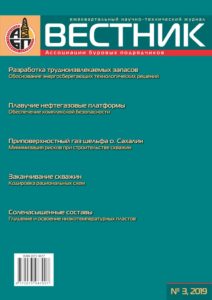ENSURING THE INTEGRATED SAFETY OF FLOATING MARINE OIL-AND-GAS PLATFORMS (COMPLEXES) OF THE NAVAL TYPE
Kharchenko Yu.A. – Doctor of Technical Sciences, Professor of the Gubkin Russian State University of Oil and Gas (National Research University), doc.2004.8@yandex.ru doc.2004.8@yandex.ru
Gritsenko A.I. – Doctor of Technical Sciences, Professor, Corresponding Member of the Russian Academy of Sciences, Advisor to the General Director, Gazprom VNIIGAZ LLC, doc.2004.8@yandex.ru doc.2004.8@yandex.ru
Atayan G.E. – Deputy General Director, Gazprom Gazobezopasnost LLC, Grigory.age@gmail.comAtayan G.E. – Deputy Director General, Gazprom gazobezopasnost LLC, Grigory.age@gmail.com Grigory.age@gmail.com
Dzhantemirov M.R. – Master's Degree Student, Gubkin Russian State University of Oil and Gas (National Research University), malik.dzhantemirov@mail.ru malik.dzhantemirov@mail.ru
УДК 629.5.02+504.2
Key words: FMOGC NT, stability, survivability, fire protection, energy systems.
This article deals with the possibilities of ensuring the integrated safety of floating marine oil-and-gas platforms (complexes) of the naval type (FMOGC NT). A comparison is made between FMOGC NT and semi-submersible, TPL and SPAR platforms, which shows that the first level of greater stability and buoyancy tolerance and this has a beneficial effect on their complex safety, whose criterion is the «survivability» property. Particular attention is paid to fire and explosion protection systems, the use of fireproof and heat-shielding coatings, ceilings, decks, ceilings on the boundaries of emergency zones, fire resistant cables, hardening of the elements of a set of hulls, equipping evacuation tunnels from the production zone in the shelter, products, as well as the development of energy systems at these complexes. In the work notes that the design of the FMOGC NT, organizational technical measures should be aimed at achieving the minimum probability of an accident and ensuring a full struggle for the survivability of the personal and crew complex, and in case of the threat of the complex’s death – the safe evacuation of personnel and the leaving of the FMOGC NT by the crew.
ENSURING THE INTEGRATED SAFETY OF FLOATING MARINE OIL-AND-GAS PLATFORMS (COMPLEXES) OF THE NAVAL TYPE
Kharchenko Yu.A. – Doctor of Technical Sciences, Professor of the Gubkin Russian State University of Oil and Gas (National Research University), doc.2004.8@yandex.ru
Gritsenko A.I. – Doctor of Technical Sciences, Professor, Corresponding Member of the Russian Academy of Sciences, Advisor to the General Director, Gazprom VNIIGAZ LLC, doc.2004.8@yandex.ru
Atayan G.E. – Deputy Director General, Gazprom gazobezopasnost LLC, Grigory.age@gmail.com
Dzhantemirov M.R. – Master’s Degree Student, Gubkin Russian State University of Oil and Gas (National Research University), malik.dzhantemirov@mail.ru
Key words: FMOGC NT, stability, survivability, fire protection, energy systems.
This article deals with the possibilities of ensuring the integrated safety of floating marine oil-and-gas platforms (complexes) of the naval type (FMOGC NT). A comparison is made between FMOGC NT and semi-submersible, TPL and SPAR platforms, which shows that the first level of greater stability and buoyancy tolerance and this has a beneficial effect on their complex safety, whose criterion is the «survivability» property. Particular attention is paid to fire and explosion protection systems, the use of fireproof and heat-shielding coatings, ceilings, decks, ceilings on the boundaries of emergency zones, fire resistant cables, hardening of the elements of a set of hulls, equipping evacuation tunnels from the production zone in the shelter, products, as well as the development of energy systems at these complexes. In the work notes that the design of the FMOGC NT, organizational technical measures should be aimed at achieving the minimum probability of an accident and ensuring a full struggle for the survivability of the personal and crew complex, and in case of the threat of the complex’s death – the safe evacuation of personnel and the leaving of the FMOGC NT by the crew.


